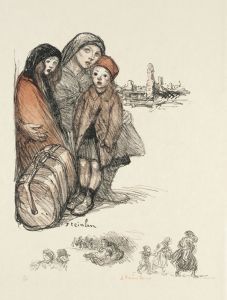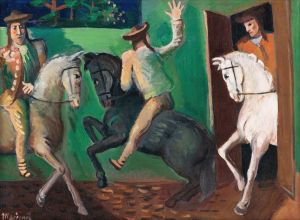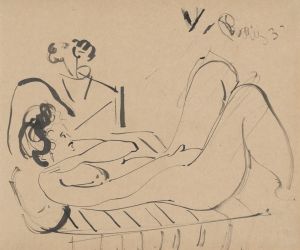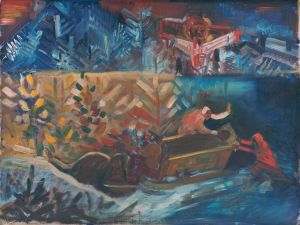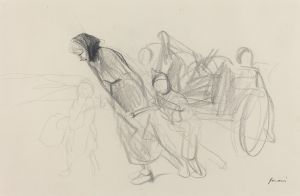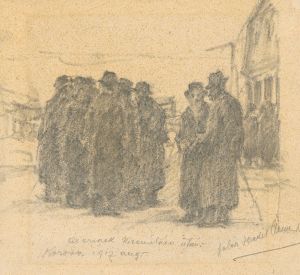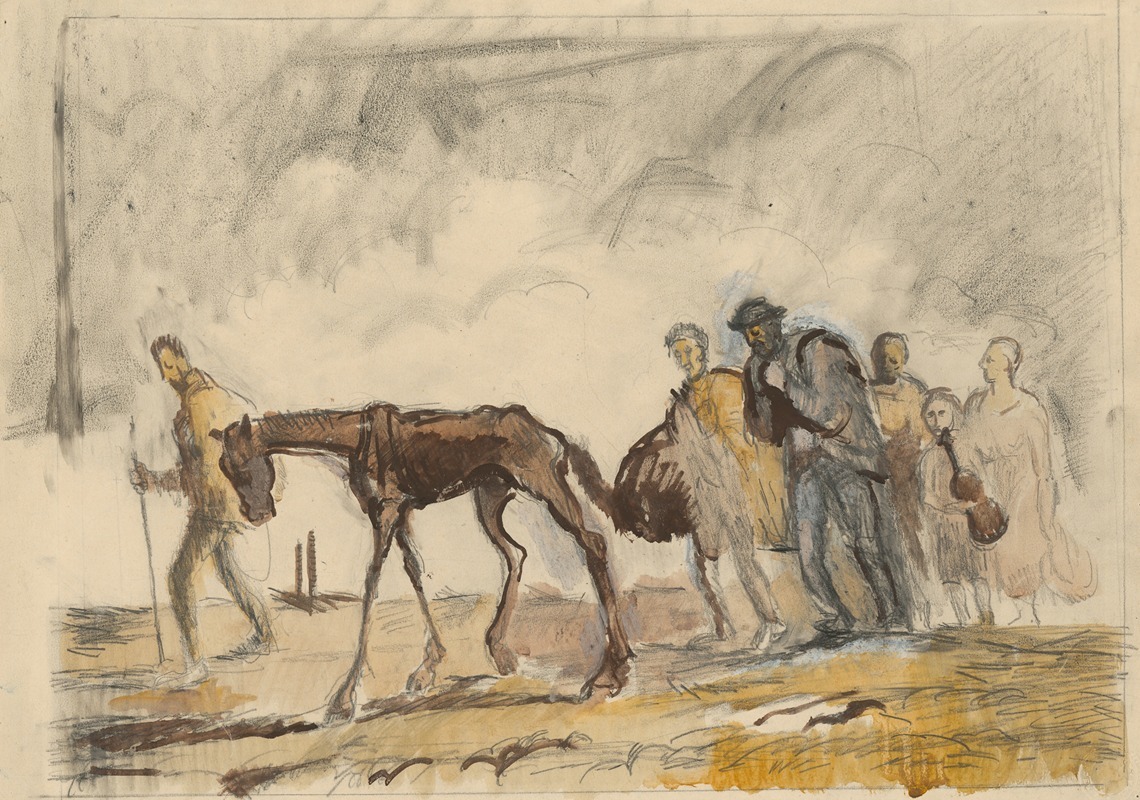
Study for the Lithograph Refugees
A hand-painted replica of Cyprián Majerník’s masterpiece Study for the Lithograph Refugees, meticulously crafted by professional artists to capture the true essence of the original. Each piece is created with museum-quality canvas and rare mineral pigments, carefully painted by experienced artists with delicate brushstrokes and rich, layered colors to perfectly recreate the texture of the original artwork. Unlike machine-printed reproductions, this hand-painted version brings the painting to life, infused with the artist’s emotions and skill in every stroke. Whether for personal collection or home decoration, it instantly elevates the artistic atmosphere of any space.
Cyprián Majerník was a Slovak painter known for his poignant and expressive works, often reflecting the socio-political turmoil of his time. One of his notable works is "Study for the Lithograph Refugees," which captures the plight and despair of displaced individuals during a period of significant upheaval in Europe. Majerník's art is characterized by its emotional depth and its ability to convey the struggles and suffering of marginalized groups.
Majerník was born on November 24, 1909, in Veľké Kostoľany, then part of the Austro-Hungarian Empire, now Slovakia. He studied at the Academy of Fine Arts in Prague, where he was influenced by the prevailing artistic movements of the time, including Expressionism and Surrealism. His work often reflects a deep empathy for the human condition, particularly focusing on themes of alienation and displacement.
"Study for the Lithograph Refugees" is a preparatory work that showcases Majerník's skill in capturing the essence of human suffering. The piece is part of a broader body of work that Majerník created during the tumultuous years leading up to and during World War II. This period was marked by widespread displacement and the refugee crisis that affected millions across Europe. Majerník's work serves as a poignant reminder of the human cost of conflict and the enduring spirit of those who are forced to flee their homes.
The study likely features figures in motion, embodying the uncertainty and fear experienced by refugees. Majerník's use of line and form would have been instrumental in conveying the emotional weight of the subject matter. His ability to distill complex emotions into visual form is a hallmark of his work, making his studies and finished pieces deeply resonant with viewers.
Majerník's art is often noted for its somber tones and the use of stark contrasts, which serve to highlight the themes of despair and hope. His work on refugees is no exception, as it captures the duality of their experience: the loss of home and the search for safety and belonging. Through his art, Majerník sought to give a voice to those who were often voiceless, using his platform to draw attention to their plight.
Despite facing personal challenges, including a battle with multiple sclerosis, Majerník continued to produce art that was both socially relevant and deeply personal. His commitment to exploring difficult themes and his ability to empathize with the suffering of others are evident in his studies and finished works.
Cyprián Majerník passed away on July 4, 1945, in Prague, but his legacy lives on through his art. "Study for the Lithograph Refugees" remains a testament to his skill as an artist and his deep compassion for humanity. His work continues to be studied and appreciated for its emotional depth and its ability to capture the complexities of the human experience during one of history's most challenging periods.






